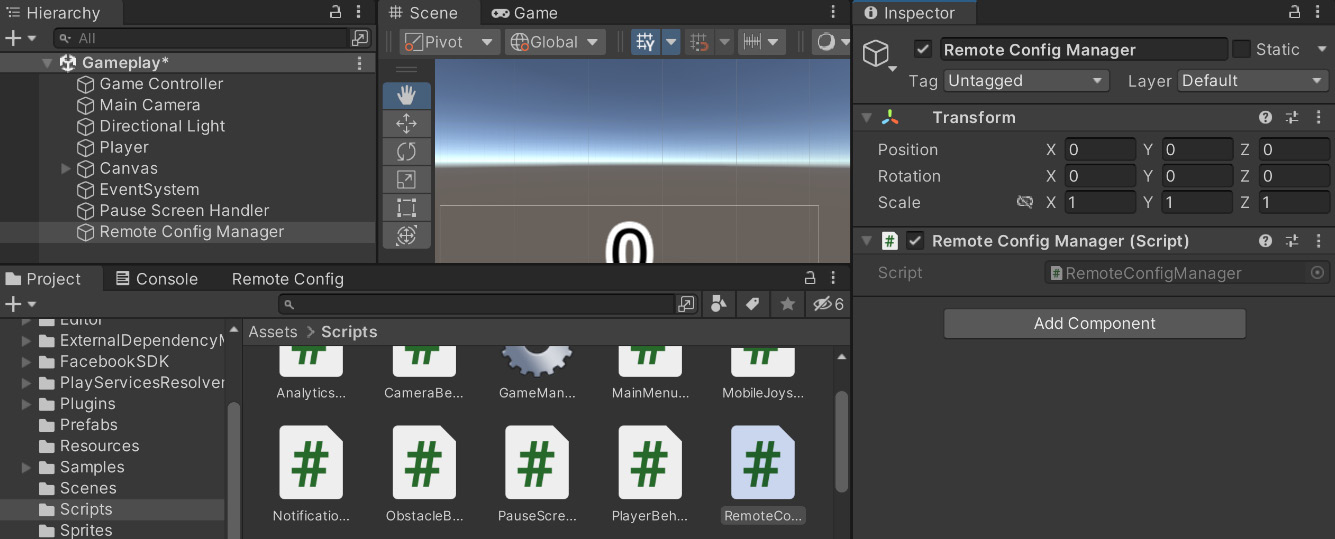Remote Config
Getting a new build of your game exported can take quite a bit of time. It takes time to actually make the changes in the Unity Editor, and then you have to export the game and upload a new version on each of the app stores you are targeting. Then, you have to spend time waiting for them to approve the app and for everyone to actually download it.
One of the things I talk to my students about is creating projects that can be easily changed without having to open the Unity Editor. This can be done using data-driven development practices – such as building levels or encounters using text files, AssetBundles, or Unity’s Remote Config (previously Remote Settings) menu – allowing us to instantly modify variables in copies of the game that are already out.
In this chapter, we’re going to see just how easy it is to set up Unity’s Remote Config system, and how we can utilize it for a simple example, by changing the difficulty of our game...





